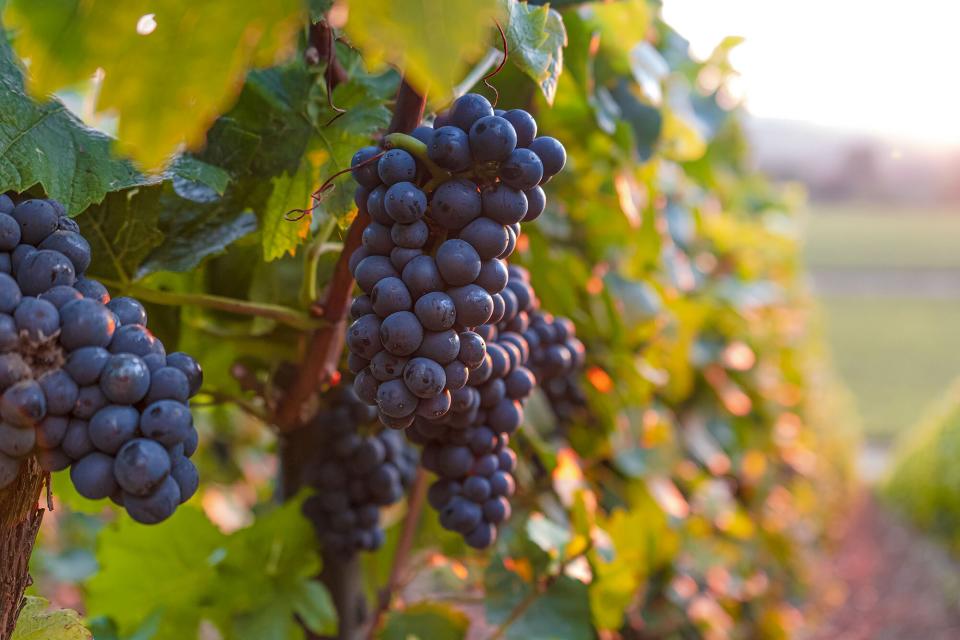Champagne Growers Vote to Change Century-Old Rule, Will Allow Vines to Be Spaced Farther Apart
Perhaps more than any other country, France requires its wine industry to adhere to strict guidelines based on generations of tradition. In recent years, however, even France has instituted changes — often in the name of fighting global warming. For instance, in 2018, the country's National Institute of Origin and Quality (INAO) added a third category of acceptable grapes specifically for "climate and environmental adaption." And earlier this year, Bordeaux officially approved six new grape varieties that are better capable of dealing with global warming.
Now, this week, another change in another world-famous wine region: Champagne has approved rewriting a century-old rule dictating the maximum distance between vines — and those behind the new rules have said that fighting climate change is the primary reason for the revisions, though some critics remain skeptical.

Getty Images
Under the old rule, rows of vines couldn't be more than 1.5 meters (about 5 feet) apart, according to the AFP. The reasoning was apparently tied to quality: Any further apart, the vines wouldn't have to compete as much for water and nutrients, which would result in larger hauls with supposedly lower quality grapes.
But though this tight spacing may be good for the grapes, it's not always great for humans looking to tend to the vines with modern technology. So the Syndicat General des Vignerons del la Champagne (SGV) — the region's growers association — conducted a study to evaluate the longstanding rules. Their findings: Lowering the density in vineyards would offer a variety of benefits without harming the quality of Champagne. And on Thursday, the SGV board approved changes allowing lower density vineyards, effectively extending the distance between vines to as much as 2.2 meters (over 7 feet).
"The aim is to accompany the necessary agro-ecological transition by adapting Champagne vines to climate change, while at the same time preserving the quality and unique quality of Champagne vines, and the economic sustainability of wine growers," Maxime Toubart, the SGV's president, was quoted as saying.
The study reportedly found that lower density vineyards would reduce greenhouse gas emissions by 20-percent by allowing the use of better equipment. And that's not all. "It will help us to achieve our objectives of zero herbicides, 50 percent less pesticides and 25 percent less carbon emissions by 2025," Toubart told Wine-Searcher before the vote. "It will facilitate our work in the vineyards and it has significant economic benefits. There is no obligation to adopt the [changes]; it is just an extra tool, another string to our bow, to be more successful in our quest to produce quality wines worthy of the Champagne appellation."
Climate change aside, however, critics are concerned that making vineyards more accessible for modern equipment could hurt the region, perhaps damaging its artisan reputation and taking away jobs from vineyard workers.
Regardless, the rules still reportedly need additional approval from the INAO. And even then, Toubart admitted, "It will be a long transition, over one, two or three generations."
